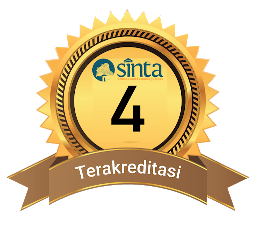Analysis of The Effectiveness of the Use of Chemical Laboratories in State High Schools in East Lombok Regency
DOI:
10.29303/cep.v8i1.6422Published:
2025-05-31Issue:
Vol. 8 No. 1 (2025): Edisi MeiKeywords:
Effectiveness, Utilization, Chemical Laboratory, Senior High School, East Lombok RegencyArticles
Downloads
How to Cite
Abstract
This study aims to determine the effectiveness of using chemical laboratory functions and tools in Public Senior High Schools throughout East Lombok Regency. The approach in this study uses a descriptive quantitative approach. The population of this study consisted of all high schools in East Lombok Regency. The sample for this study comprised six schools: SMAN 2 Selong, SMAN 3 Selong, SMAN 1 Terara, SMAN 1 Pringgabaya, SMAN 1 Sembalun, and SMAN 1 Labuhan Haji, which were selected using purposive sampling. Data collection used questionnaires and interviews; the questionnaire used was closed with a Likert scale. For the interpretation of problem data using the criteria of 5 categories (not effective, less effective, moderately effective, effective, very effective) which are determined by simple percentages and tables. Based on data analysis it is known that; 1) the effectiveness of the use of chemical laboratory functions in State Senior High Schools throughout East Lombok Regency has been effective (74.82%). 2) The effectiveness of the use of chemical laboratory equipment in State Senior High Schools throughout the East Lombok Regency has been effective (80.33%).
References
Anas, A. (2006). Pengantar Statistik Pendidikan. Jakarta: PT.Raja Grafindo Persada.
Arikunto, S. (2005). Prosedur Penelitian Suatu Pendekatan Praktek. Jakarta: PT Rineka Cipta.
Astuti, R. W., Sunarno, & Suciati S. (2012). Pembelajaran IPA dengan Pendekatan Keterampilan Proses Sains menggunakan Metode Eksperimen Bebas Termodifikasi dan Eksperimen Terbimbing Ditinjau dari Sikap Ilmiah dan Motivasi Belajar Siswa. Jurnal Inkuiri, (51).
Cabusor, S. M., & Antonio, V. V. (2025). Availability, Accessibility, and Teachers’ Utilization of Science Laboratory Resources in Public Secondary Schools of Ilocos Norte. International Journal of Multidisciplinary: Applied Business and Education Research, 6(3), 1478-1493. http://dx.doi.org/10.11594/ijmaber.06.03.33
Candra, R., & Hidayati, D. (2020). Penerapan praktikum dalam meningkatkan keterampilan proses dan kerja peserta didik. Jurnal Pendidikan Dan Sosial Keagamaan, 1 (6), 26-36. Retrieved from https://core.ac.uk/download/pdf/328109859.pdf
Decaprio, R. 2013. Tips Mengelola Laboratorium Sekolah. Jogjakarta: DIVA Press.
Emda, A. 2017. “Kedudukan Motivasi Belajar Siswa Dalam Pembelajaran.” Lantanida Journal 5(2): 93–196. ttp://dx.doi.org/10.22373/lj.v5i2.2838
Gericke, N., Högström, P., & Wallin, J. (2022). A systematic review of research on laboratory work in secondary school. Studies in Science Education, 59(2), 245–285. https://doi.org/10.1080/03057267.2022.2090125
Jofrishal, N., & Munandar, H. (2021). Analysis of problem in utilizing school laboratories in the chemistry learning. Advances in Social Science, Education and Humanities Research/Advances in Social Science, Education and Humanities Research. https://doi.org/10.2991/assehr.k.210909.025
Junaidi, E., Hadisaputra S., & Idrus S. W. A. (2017). Kajian Pelaksanaan Praktikum Kimia di Sekolah Menengah Se Kabupaten Lombok Tengah. Jurnal Ilmiah Profesi Pendidikan, 1 (2), 101-111. https://doi.org/10.29303/jipp.v2i1.41
Ma’arij, M. F. (2017). Efektifitas Model Pembelajaran Project-Based Learning (PJBL) Terhadap Hasil Belajar Fisika Pokok Bahasan Fluida. Jurnal Pendidikan, 18(1), 25–41.
Mastika, N. 2014. “Analisis Standarisasi Laboratorium Biologi dalam Proses Pembelajaran di SMA Negeri Kota Denpasar.” E-journal program pascasarjana Universitas Pendidikan Ganesha, (4). Retrieved from https://ejournal-pasca.undiksha.ac.id/index.php/jurnal_ipa/article/view/1077/825
Mohammed, U. (2021). Availability of laboratory equipment on chemistry in senior secondary school students and its effect on students’ academic performance. International Journal of Multidisciplinary Research and Growth Evaluation, 2(4), 600-606. Retrieved from https://www.allmultidisciplinaryjournal.com/uploads/archives/610E586F06FDB1628330095.pdf
Mulyasa, E. (2009). Menjadi Guru Profesional. Bandung: PT Remaja Rosdakarya.
Saputra, W. D., & Kurniawati, Y. (2021). Desain Media Pembelajaran Berbasis Android Pada Materi Praktikum Pengenalan Alat Laboratorium Sekolah Menengah Atas. Journal Of Natural Science And Integration, 2 (4), 268-276. http://dx.doi.org/10.24014/jnsi.v4i2.12068
Sugiyono. 2015. Metode Penelitian Kuantitatif Kualitatif dan R&D. Bandung: Alfabeta.
Scaradozzi, D., Guasti, L., Di Stasio, M., Miotti, B., Monteriù, A., & Blikstein, P. (2021). Makers at school, educational robotics, and innovative learning environments. In Lecture notes in networks and systems. https://doi.org/10.1007/978-3-030-77040-2
Susanti, R. 2013. “Pengaruh Penerapan Pembelajaran Berbasis Masalah pada Praktikum Fotosintesis dan Respirasi untuk Meningkatkan Kemampuan Generik Sains Mahasiswa Biologi FKIP Unsri.” Jurnal Nasional. Palembang: Tidak Diterbitkan
WHO. 2011. Handbook Laboratory Quality Management System. Switzerland: WHO Press.
Yaman, E. 2016. Pengoptimalan Peran Kepala Labor dalam Menunjang PembelajaranIPA di SMPN 7 Kubung. Jurnal Penelitian Guru Indonesia, 1 (1), 63. https://doi.org/10.29210/0250jpgi0005
Author Biographies
Spir Senyum Rekasawiji, Chemistry Education Study Program, Faculty Of Teacher Training and Education, University Of Mataram
Saprizal Hadisaputra, Pendidikan Kimia, Universitas Mataram
Eka Junaidi, Pendidikan Kimia, Universitas Mataram
License
Copyright (c) 2025 Spir Senyum Rekasawiji, Saprizal Hadisaputra, Eka Junaidi

This work is licensed under a Creative Commons Attribution-ShareAlike 4.0 International License.
Authors who publish with Chemistry Education Practice agree to the following terms:
- Authors retain copyright and grant the journal right of first publication with the work simultaneously licensed under a Creative Commons Attribution License 4.0 International License (CC-BY-SA License). This license allows authors to use all articles, data sets, graphics, and appendices in data mining applications, search engines, web sites, blogs, and other platforms by providing an appropriate reference. The journal allows the author(s) to hold the copyright without restrictions and will retain publishing rights without restrictions.
- Authors are able to enter into separate, additional contractual arrangements for the non-exclusive distribution of the journal's published version of the work (e.g., post it to an institutional repository or publish it in a book), with an acknowledgement of its initial publication in Chemistry Education Practice.
- Authors are permitted and encouraged to post their work online (e.g., in institutional repositories or on their website) prior to and during the submission process, as it can lead to productive exchanges, as well as earlier and greater citation of published work (See The Effect of Open Access).






